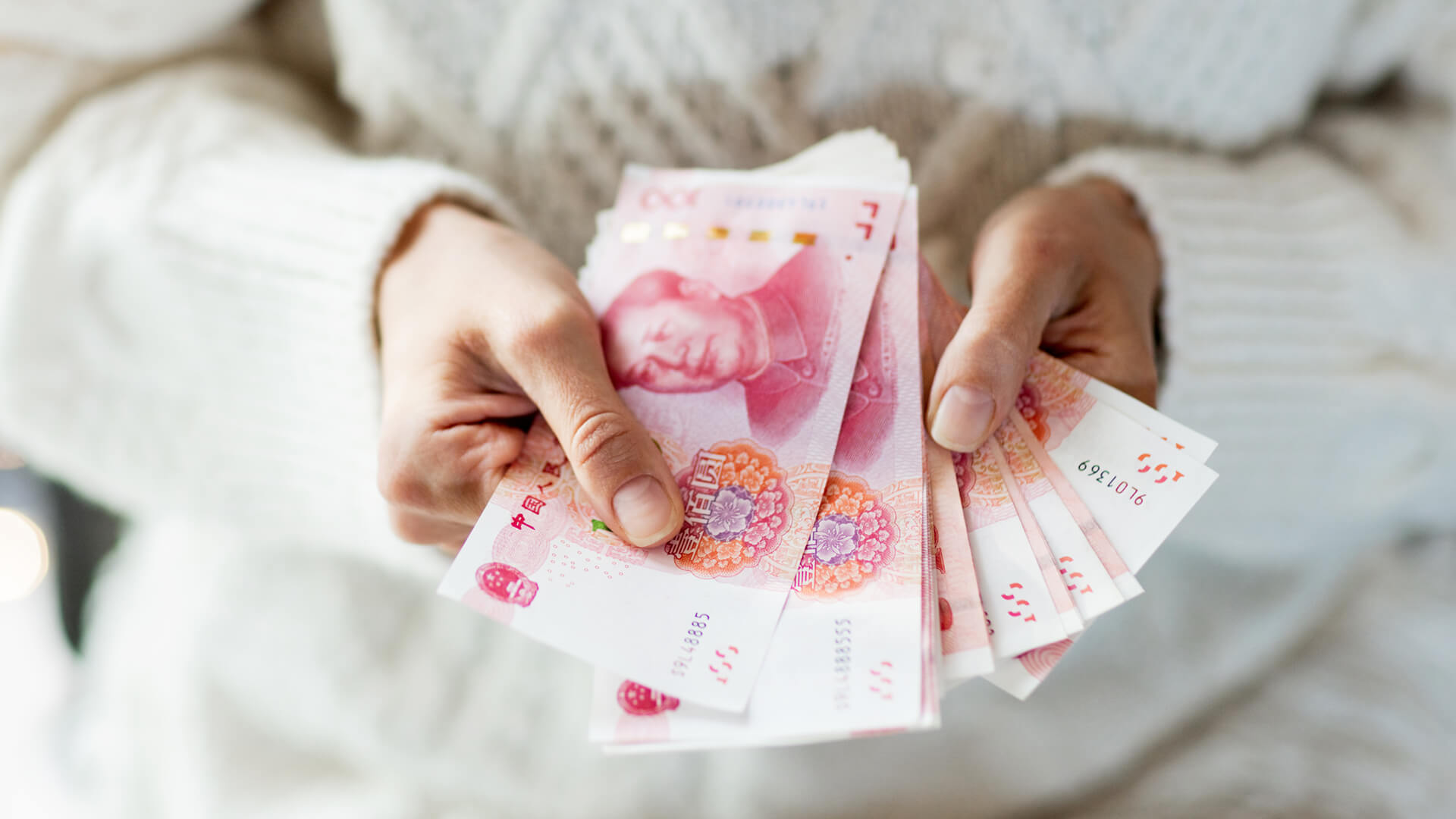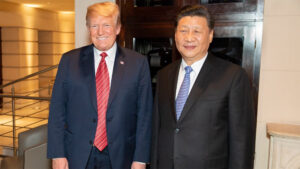China is facing an economic downturn reminiscent of Japan’s struggles in the 90s. Actually, I take that back…China’s outlook is much worse.
The core of China’s problem is declining demographics. This crushes demand and leaves industrial production as the only path forward. Issuing debt and spending more on real estate, bailing out local governments and boosting industrial capacity isn’t going to do much, in fact, it will lead to deflation…a particularly nasty economic phenomenon which occurs when oversupply drives prices down into a reinforcing spiral of dysfunction involving recession, industrial busts, mass unemployment and general mehness.
If the Chinese want to avoid deflation, they’ll need to cut industrial capacity, but that’s not risk-free either. And to round out China’s list of issues, Chairman Xi’s chokehold on Chinese power adds another layer of complexity to successfully navigating this economic headwind.
Here at Zeihan on Geopolitics, our chosen charity partner is MedShare. They provide emergency medical services to communities in need, with a very heavy emphasis on locations facing acute crises. Medshare operates right in the thick of it, so we can be sure that every cent of our donation is not simply going directly to where help is needed most, but our donations serve as a force multiplier for a system already in existence.
If you sign up for our Patreon page in the month of October, the proceeds from your subscription for the remainder of 2024 will be donated directly to MedShare. So, you can get our all of the perks of joining the Patreon AND support a good cause while you’re doing it.
We encourage you to sign up for the Patreon page at the link below.
Transcript
Hey, everybody. Peter Zeihan here. Coming to you from New Orleans. It’s like 6 a.m., but this is the only time I have today to record, so here we are. The news in the last few days is that the Chinese are doing another, another, another stimulus program. It’s starting to feel a lot like what happened in Japan in the 1990s, where they throw more money into the situation, hoping to generate economic growth.
But it never did, because their problem at its core is demographic. Unless you can get people to spend more, to consume more, all that’s left is industrial development. In the case of Japan, they used that for real estate, and so the bottom fell out of the market, and it took 25 years to recover. You could argue it’s only in the last five years that Japan has gotten back to some version of normal.
In the case of China, the demographic decline is way more advanced than it ever was in Japan 20 years ago. In fact, you could argue that in terms of the collapse of numbers of people under age 50, it’s actually much worse today in China than it is in Japan, even now, even though Japan’s the world’s oldest society.
It’s that lopsided. Anyway, back to the topic. The Chinese indicate that they’re going to issue a lot of debt, which is something they’ve never really done before, with the numbers being floated somewhere in the low hundreds of billions to the mid hundreds of billions. So by any measure, even for an economy China’s size, this is potentially a huge amount of capital.
So the question, though, is what are you going to put it towards? Three things have been floated. Number one, buying up property that hasn’t been finished so it can be finished. Well, that will exacerbate the oversupply of condos, which is already more than enough to house over a million and a half people, so that does nothing except for maybe generate a little bit more public goodwill because that’s where 70% of private savings is.
So that’d be a political decision, not an economic one. The second one is to bail out the debt of local governments. Local governments can sell land and issue bonds, but they can’t raise taxes, so they have no way of really generating an income. And once they issue debt, they have really no way of paying it back.
So that’s like a $4 trillion asset class that’s completely bunked. And while, you know, we throw half a billion at it, that’s not nothing, but it really doesn’t move the needle in any appreciable way. And the third idea that the Chinese have floated is, shocker, building more industrial capacity. So we’re in this weird situation where the Chinese are kind of damned if they do and damned if they don’t.
I mean, if they do nothing and consumption continues to wither and tariffs against them for their overproduction continue, then their industrial case fails and the population basically falls into impoverishment. This new idea of throwing a lot more money against industrial output actually generates potentially a worse outcome called deflation. Now deflation sounds nice, but it is not. We’re all familiar with inflation, when prices rise, either because there’s an insufficient supply or too much demand.
Eventually, you get spiraling prices that hurt everybody and eventually eat away at the value of economic assets. Based on who you are, that’s different levels of disastrous. But deflation in many ways is significantly worse. Deflation comes from a similar imbalance between supply and demand, but it’s when there’s too much supply compared to demand. In those circumstances, prices start dropping because there’s too much stuff.
People can’t possibly consume it all. And eventually, people become used to the prices going down, so they put off their purchases, which increases the disparity between supply and demand even more. Eventually, it gets so bad, and the oversupply becomes so much relative to demand that the industrial base starts to collapse and people start to lose their jobs because nothing is profitable anymore.
And then all of a sudden you’re hitting it on the demand side as well. The demand is collapsing because people have lost their jobs. Some version of this, in a persistent but mild form, happened in Japan starting in the late 1990s and continued all through the 2000s and through most of the 2010s. We also had a version of this in the Great Depression.
The problem we have in dealing with deflation is, ultimately, you have to get supply and demand back into whack so that they’re actually aligned with one another again. The two ways to do that are to increase demand or decrease supply. In China, it’s difficult to imagine being able to increase demand because there are now more people over age 50 in China than there are under age 50 in China.
And generally, it’s people under age 40 that are doing most of the consumption, and that is the class that has been completely gutted by the one-child policy, in addition to the world’s fastest industrialization process. It’s only been a generation since Chinese folks were having, on average, five and six kids, to now having one. In fact, in the metros where the majority of Chinese now live, we’re now looking at the birth rate being one quarter or less of replacement levels.
We’re talking about 0.5 children per woman. There aren’t enough people to even think about a meaningful consumption rebound. Well, that leaves destroying supply. And in this, the Chinese face two problems. Number one, oversupply has been the state mantra for the last 40 years, and that is the Chinese development model. You look around the world, you figure out something that’s in demand.
You produce it. You use subsidies, you use cheap labor. You produce, produce, produce, produce, produce—not for your domestic market, for the foreign market. You export it. And over the last 40 years, this has moved from product to product to product, from steel to cement and now increasingly electronics products. Now they’re trying to get into electric vehicles.
And it’s just on and on and on and on. Well, in a world where those who are experiencing breakneck economic and demographic growth, there’s some strength to that model. And especially in the 1990s, in the 2000s, we had the developing world kind of getting in the act of industrialization and urbanization. But a couple things to keep in mind. Number one, you only urbanize once, and once you do that, your demand for those sorts of products drops.
Second, when you urbanize, your birth rate collapses. And if you’re, say, Brazil, that means you had a demographic moment in the 90s and the 2000s, but now you’re actually aging faster than the European countries, and your demand has kind of hit a plateau. And you’re also looking at the Chinese, who are basically doing product dumping at scale. You’re like, you know what? I don’t want to play this game. And so it’s not just the United States and the European Union and Japan and Canada that have put all these tariffs on things like electric vehicles from China. It’s also Indonesia. It’s also Brazil. It’s also Turkey. Most recently, Russia. The Chinese have produced all this stuff with the intent of swamping markets to save their social model.
And in doing so, they basically encouraged everyone to block the markets of Chinese products. So if the Chinese were to add more industrial capacity now as part of a stimulus program, all that’s going to do is exacerbate the oversupply. And now there’s nowhere for it to go. So I would argue that a year ago, before this really got serious, the Chinese probably had about twice the industrial plant that they needed because so much of it was geared to service the foreign market.
Well, now a lot of that is being shut out of foreign markets, and the Chinese are having to deal with it at home. Any stimulus will be on top of that. So the only way that the Chinese can avoid deflation at this point is to basically gut half or more of their industrial plant, and then you’ve destroyed the employment program for the entire country.
And if there’s one thing the Chinese government is obsessed about, it’s making sure that people have jobs so they don’t get together in large groups and go on long walks together. So there are any number of reasons how the Chinese economy can ultimately collapse. Demographics are at the heart of most of it, but it could be a trade war.
It could be a deflationary spiral, or it could be any sort of resource restriction. That’s not a short list, but we’re now in a situation where they could theoretically make it all about internal miscalculations and trying to rationalize their economic model for a world that can no longer support it. So this has become very real, very fast, and the Chinese are struggling mightily.
The question is whether or not they can come up with enough policy creativity to try something new. And since Chairman Xi has basically gutted the entire system of all decision makers but himself, I don’t think the chances of that are very high. All right, you guys take care.







